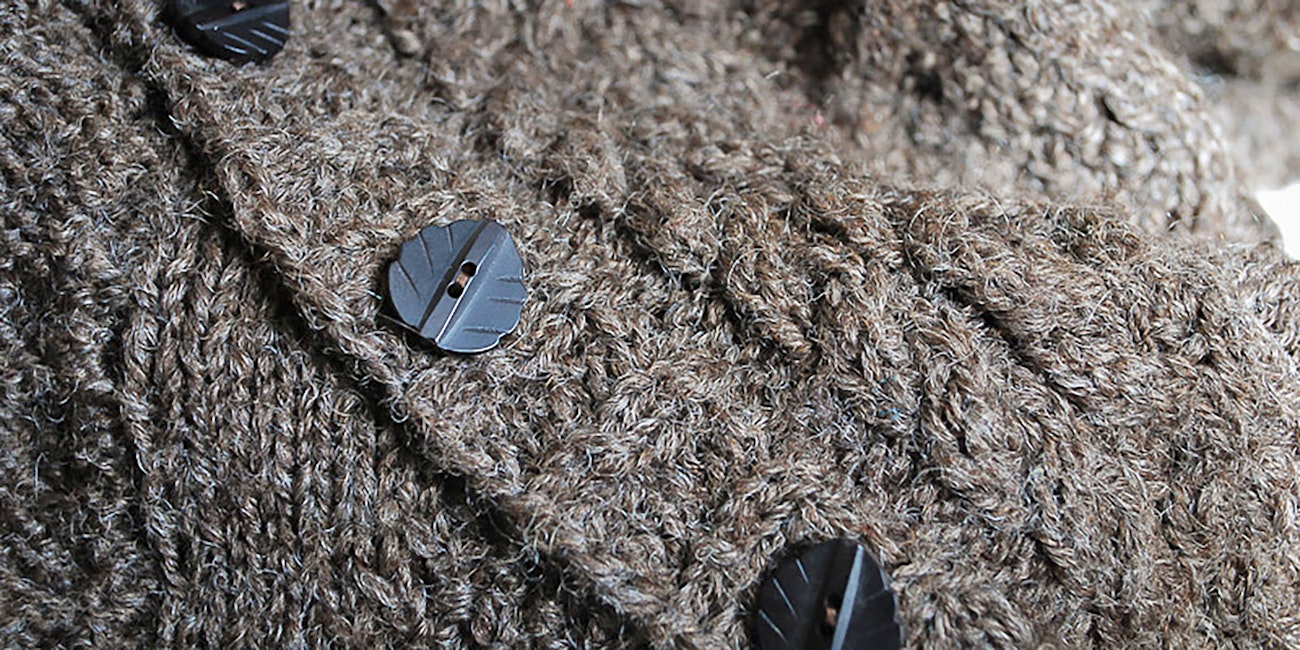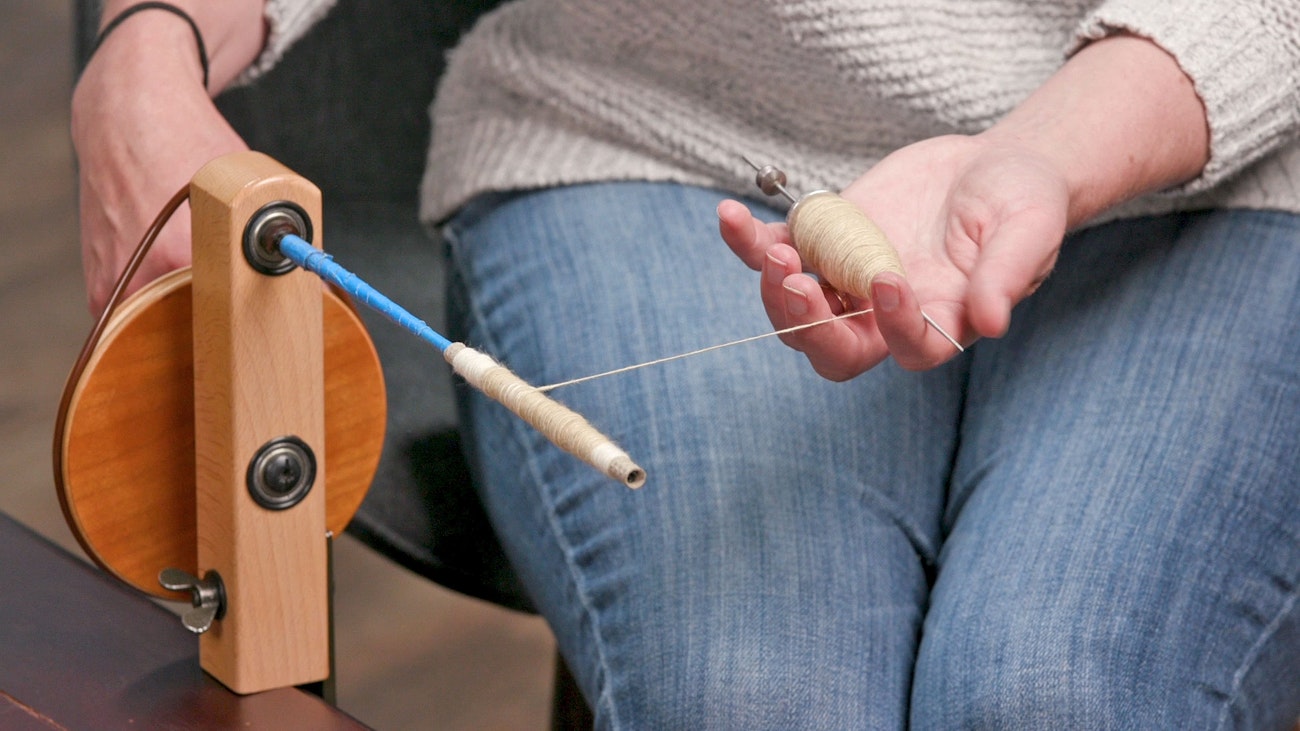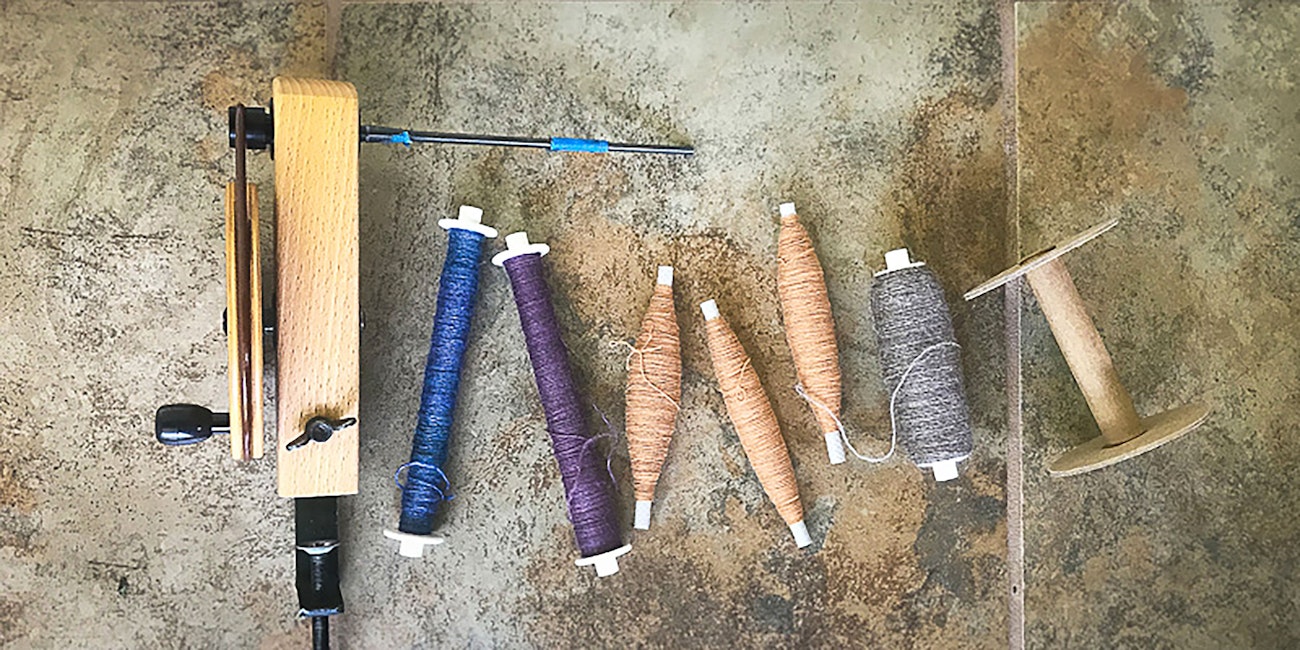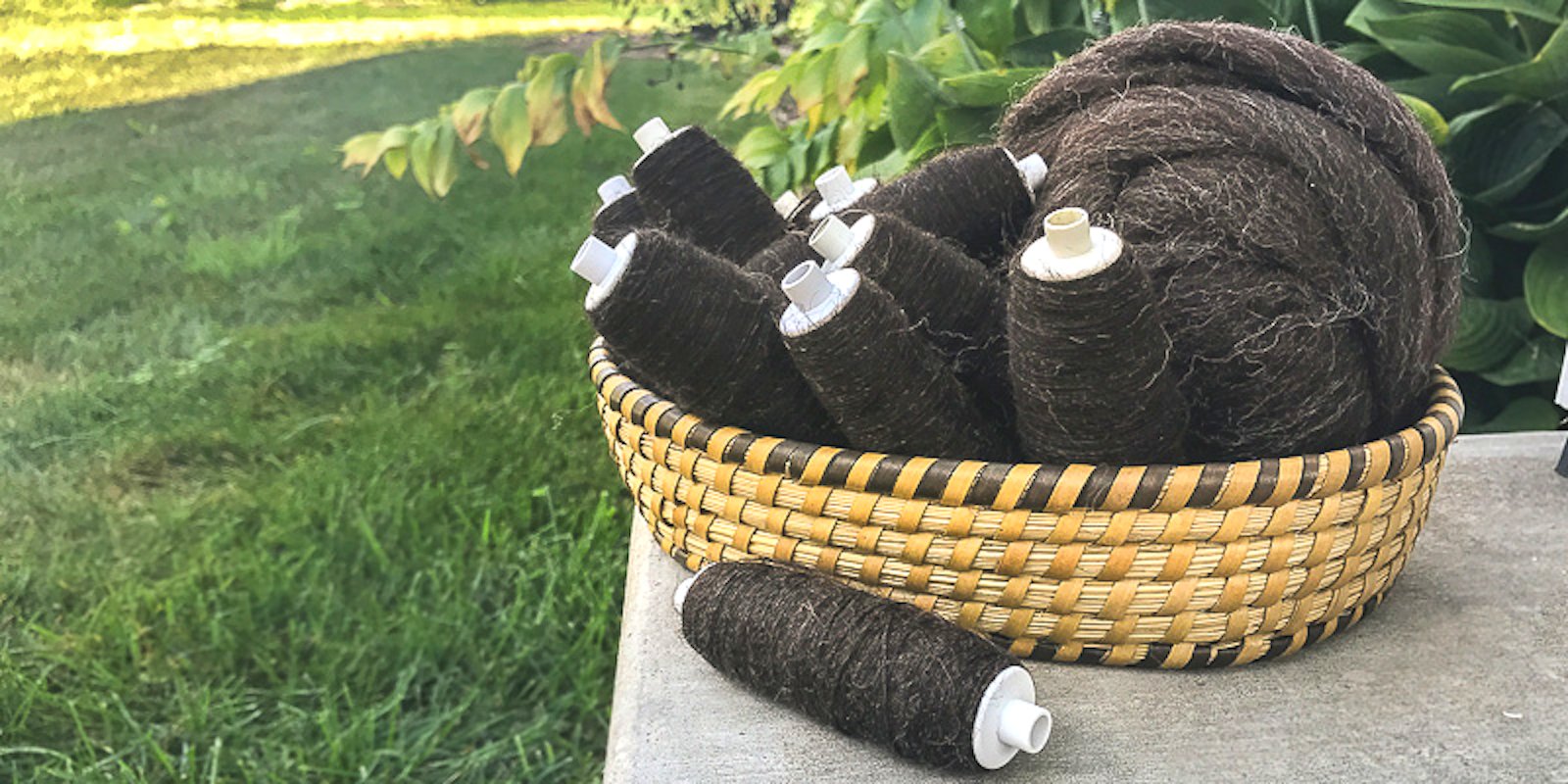The first time someone told me I needed to add a bobbin winder to my spinning practice, I thought it looked like extra work and extra equipment I didn’t need in my life. Then, a dreadful hem happened . . . Here’s my tale of woe.
Early in my spinning and knitting journey, I decided to embark upon a cabled cardigan. I had some beautiful Shetland roving, and I spun a three-ply yarn and settled into a rhythm I was quite happy with: fill three bobbins, ply them onto a fourth bobbin, make a skein, and repeat. I had barely enough yardage when it was all finished. However, included in this nail-biting yardage total was a skein that was just a bit smaller gauge than the others. “It’ll be fine,” I told myself.
 No one will ever notice, Kate told herself.
No one will ever notice, Kate told herself.
Where I used the odd skein to knit the back hemline, I can see and feel a difference in the fabric. This is the project that convinced me to rewind my singles for most projects. Why?
It took me a while to spin the yarn for that sweater. Most of it was spun at once, but then there was a month before I got back to the project and finished that last skein—the oddball. If I had spun all of my singles first, using a bobbin winder to rewind the yarn onto storage bobbins, I could have mixed them together before plying. That way the small differences from the first singles and the last singles would have been spread out across the entire project.
 Kate winds cotton from her charkha bobbin onto a storage bobbin using her bobbin winder. Photo from the online course How to Spin on a Charkha with Kate Larson, by Long Thread Media
Kate winds cotton from her charkha bobbin onto a storage bobbin using her bobbin winder. Photo from the online course How to Spin on a Charkha with Kate Larson, by Long Thread Media
Why rewind?
Storage Potential
Spinning wheel bobbins can be expensive. Storage bobbins (designed for weavers to store weft yarn in shuttles) only cost a few dollars, so you can have loads of them.
Consistent Skeins
As I mentioned, rewinding singles onto storage bobbins allows you to mix all the singles before plying. This is not only because we can vary in our spinning, but because natural fibers vary in character as well. Roving and hand-prepared fibers often have differences within the batch, so rewinding allows these to be mixed together.
Level That Twist
Rewinding also gives the twist in the singles another opportunity to level. For example, if you treadled a bit slower to pick out a nep, there is a spot with a bit more twist. Rewinding offers the opportunity for that twist to spread out into neighbor yards. (More on this in “Bobbin Winder How-To: Tools and Tips.”)
 Kate's bobbin winder, at left, is shown with an assortment of bobbins.
Kate's bobbin winder, at left, is shown with an assortment of bobbins.
How to rewind?
There are many options for winding your bobbins, but in this video, Susan Horton shows us weavers' tricks for winding a good bobbin. While originally developed for weavers, these tips will make for effortless plying from your storage bobbins!
And where I had used the odd skein to knit the back hemline? More advice that I would give my younger self would be to alternate rows with the oddball and another ball of yarn to dilute the effect of the change in gauge. We live and learn.
Further Reading
- Find more of Kate's tips for storage bobbins and storage bobbin winders in “Bobbin Winder How-To: Tools and Tips.”
- Storage bobbins don't have to be expensive. Read how Kat Pong used a variety of options in her article,“Can I Spin an 8-Ply Yarn Without Cabling?”
Kate Larson, editor of Spin Off, teaches handspinning around the country and spends as many hours as life allows in the barn with her beloved flock of Border Leicesters.
Originally published August 21, 2017; updated May 25, 2021; updated June 4, 2025.

